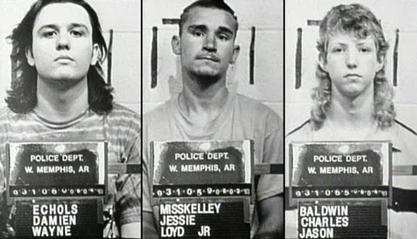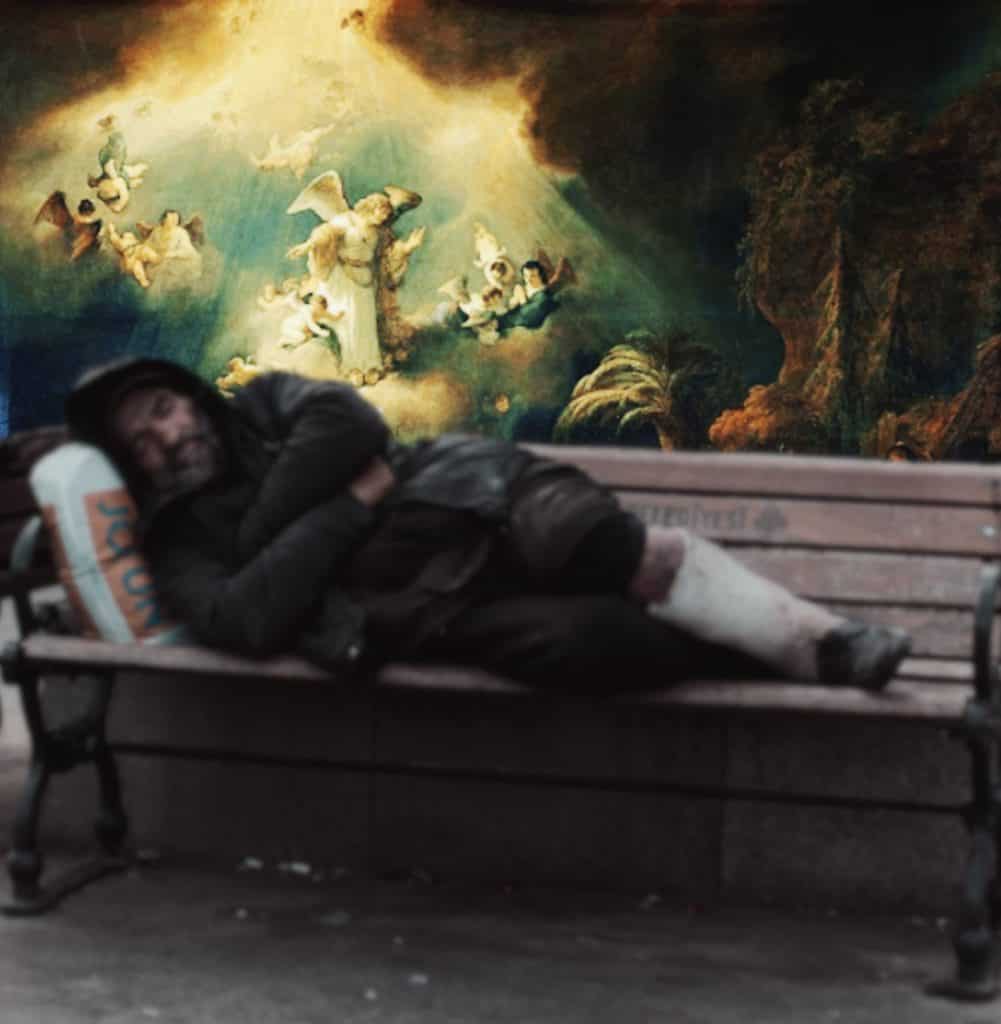Stranger Things returned to Netflix with the first seven episodes of its fourth season in May. Matt and Ross Duffer’s series has offered fans a mixture of horror and sci-fi with a massive dose of eighties nostalgia since the premier of season one in 2016. Their homage to the eighties includes references to classic films, music, and toys of the era. Stranger Things also plays with the existential fears and villains of the period. Season three focused on a Soviet plot to harness the power of the “upside down” universe that exists adjacent to Hawkins, IN. The Soviets return in season four as Jim Hopper (David Harbour) fights to survive in a Russian prison. It was only a matter of time before a show that features Dungeons and Dragons introduced eighties America’s obsession with the ultimate boogeyman, the devil himself.
Real monsters abound in the Stranger Things universe, but it’s the citizens of Hawkins who may prove to be our heroes’ most dangerous adversaries. The deaths of several students early in the season spark nervous talk about the devil stalking the town. Jason (Mason Dye), the captain of the basketball team whose girlfriend is killed in the first episode, incites concerned citizens against the Hawkins High School “Hellfire Club” and its founder, heavy metal fan and D & D master Eddie Munson (Joseph Quinn). Jason’s girlfriend, Chrissy (Grave Van Dien) died in Eddie’s trailer, making him the prime suspect. The Duffers acknowledge that the Eddie Munson character was based on Damien Echols.
Echols entered the national conversation in 1993 when he was accused along with Jessie Misskelley Jr. and Jason Baldwin of killing three young boys in West Memphis, AR. The infamous West Memphis Three case rode the wave of the Satanic Panic, which had been tearing through American cultures and courtrooms for fifteen years when Echols was convicted of the murders and sent to death row. The case against the three defendants was prejudiced from the outset by community revulsion at their obsession with heavy metal music and occult imagery. The grisly details of the murders and placement of the bodies led people to assume that the deaths were part of a satanic ritual. Subsequent testimony by social workers and psychologists about Echols’ troubled home life and graphic statements about drinking blood bolstered public perceptions that the three young men were part of an organized cult. This assumption stood despite the fact that the other two defendants barely knew Misskelley. Investigators ignored a number of leads involving other suspects. Many people, including some members of the victims’ families and celebrities, expressed dissatisfaction with the handling of the case.
The case against them began to fall apart as the three men served time in prison. Key witnesses recanted their testimonies, and evidence of jury contamination undermined the prosecution’s case. New DNA evidence tested in 2007 matched neither the victims nor the three accused. The defendants were allowed to enter an Alford plea, a legal device that allowed them to continue claiming innocence while acknowledging sufficient evidence to convict them, in 2011. The judge used their plea to reevaluate their sentences and enable their release with the condition that they could be returned to prison with strict sentences if they offend again.
Echols pursues a career today as a writer and artist. He’s written several books on Neo-Pagan spirituality and magick including High Magick: A Guide to the Spiritual Practices That Saved My Life on Death Row (2018) and Angels and Archangels: A Magician’s Guide (2020).
Stranger Things captures the desperate situation of the West Memphis Three in the form of Eddie Munson while still falling short of depicting the full absurd reality of their story and the Satanic Panic in general. Fiction will fall short always in such attempts because truth really is stranger than fiction. Stories should be inventive and push the envelope, but they still need to make some sense for people to buy their premise. Any agent or editor worth their salt would refuse to accept a story where the protagonists and antagonists acts in ways that so defy logic that we have a hard time believing they could fall for a particular myth or trick. “Come on,” the publisher says, “People wouldn’t really be that stupid.” Except, they are in real life. Early twenty-first-century America has served as a protracted exercise demonstrating that people are not as gullible as we thought they were. They are infinitely more gullible than we could have possibly imagined. From Trumpism to racism to Southern Baptist sexual abuse, many Americans seem literally hell bent on living down to the very worst caricatures of human nature.
The Satanic Panic serves as a cautionary tale so rich in the theater of human absurdity that I’m working on a whole book project devoted to how it has affected American Christianities and cultures. There are that many examples. Four years before the West Memphis Three were on trial, the infamous McMartin preschool case had come to an end with nothing to show for ten years of investigations and accusations. Allegations of a satanic cult operating out of the Long Beach, CA daycare led to torturous court proceedings and no convictions. Frustrated parents and conspiracy theorists dug extensive trenches around the McMartin building looking for alleged secret tunnels that simply were not there. Children were traumatized by interviews with “expert” psychologists and social workers who elicited ever more bizarre tales through a combination of psychological pressure and suggestion.
Christian subcultures rode this bandwagon, often simply piling on and adding their own agenda to mainstream paranoias. Lauren Stratford, author of Satan’s Underground and self-proclaimed survivor of a Satanic cult’s baby mill, offered herself as a witness in the McMartin Trial. Comedian Mike Warnke gained a larger platform as his tales of satanic cult life, first popularized in The Satan Seller (1972), appeared to be coming to life in real time. Conservative evangelicals and Neo-Pentecostals, so skilled at the art of misdirection, pointed to heavy metal music and role-playing games as the acid dissolving American society while racism, sexual abuse, and authoritarianism bubbled below the surfaces of their own communities. Persons within conservative evangelicalism, particularly among the Chicago-based Jesus People U.S.A., exposed the fraudulent claims of Satanic Panic provocateurs such as Warnke and Stratford by the early nineties. Despite the ample evidence that so many Satanic Panic claims were fraudulent, the wave of paranoia continued and continues still, sweeping Echols and his friends up in the tide.
Stranger Things returns with the final two episodes of season four in July. The Duffers promise a fifth season to conclude the story. It will be interesting to see if Hawkins resolves their Satanic Panic this season or whether that drama will continue into season five. Will the citizens realize the real danger of the “upside down” or continue to focus on the misdirection of a polished poster boy athlete proclaiming shibboleths from a scripture he neither reads nor understands? The stakes are real. In a culture where movements exist that label public school teachers as “groomers” (rhetoric taken directly from the Satanic Panic and McMartin case playbooks) one day and then want to arm them the next, it’s obvious that logic has taken a back seat. Fiction like Stranger Things can never hope to match the absurdity of our lived realities. But maybe, just maybe, fiction can hold a mirror up to help us see and correct our own absurdities.
Suggested Reading:
Mara Leveritt, Devil’s Knot: The True Story of the West Memphis Three, Atria Books, 2003.
Richard R. Beck, We Believe the Children: A Moral Panic in the 1980s, PublicAffairs 2015.
Joseph P. Laycck, Dangerous Games: What the Moral Panic over Role-Playing Games Says about Play, Religion, and Imagined Worlds, University of California Press, 2015.







